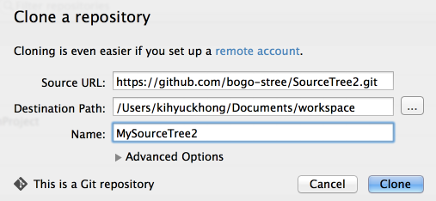

The git merge command lets you take the independent lines of development created by git branch and integrate them into a single branch. Note that all of the commands presented below merge into the current branch. The current branch will be updated to reflect the merge, but the target branch will be completely unaffected. Again, this means that git merge is often used in conjunction with git checkout for selecting the current branch and git branch -d for deleting the obsolete target branch. Git merge will combine multiple sequences of commits into one unified history. In the most frequent use cases, git merge is used to combine two branches. The following examples in this document will focus on this branch merging pattern. In these scenarios, git merge takes two commit pointers, usually the branch tips, and will find a common base commit between them. Once Git finds a common base commit it will create a new "merge commit" that combines the changes of each queued merge commit sequence. Say we have a new branch feature that is based off the main branch. We now want to merge this feature branch into main. Invoking this command will merge the specified branch feature into the current branch, we'll assume main. Git will determine the merge algorithm automatically (discussed below). Merge commits are unique against other commits in the fact that they have two parent commits. When creating a merge commit Git will attempt to auto magically merge the separate histories for you. If Git encounters a piece of data that is changed in both histories it will be unable to automatically combine them. At the top, we have the search button that we can use to look for commits.Īll these features exist in the main interface, which makes it a great experience to work with GitKraken.”īy comparison, Sourcetree’s UI is split into three views: File Status, Log/History, and Search.This scenario is a version control conflict and Git will need user intervention to continue. In the right panel, we can see details of any commit we select from the history.

The project’s history and the work in progress are in the center, and we can see stashes too. In the left panel, we have information about the project, such as local branches, the remote repositories added to the project and their branches, stashes, tags, and submodules. “In GitKraken’s main interface, we have everything we need. The difference in UI is eloquently described by Satoripop developer, Ghassen Rjab, in his article, “ Is it better to use GitKraken or Sourcetree for Git?” Icons on branch labels show which remotes and PRs they belong to. If you’re collaborating on a project, avatars act as visual markers that let you know who committed work. Interact directly with branches and commits when you merge with drag-and-drop, create branches, or revert commits. The graph in GitKraken is not only a beautiful representation of your work, it is also a highly functional tool for managing your branches and commits. GitKraken is a primary focus of Axosoft’s development team, making it possible to provide frequent updates and improvements, in addition to discoverable and helpful Learn Git resources and support. Having varied features across OS can be challenging when you need to troubleshoot an issue. 4įurthermore, Sourcetree is not a focus of Atlassian, shown by a lack in communication and infrequent application updates. Users often complain of frustrating discrepancies between versions.
#Git sourcetree branch windows#
Sourcetree’s experience varies greatly depending on whether you’re using the tool on Windows or Mac. Empowering your engineers with the tools they want to use will lead to happier employees and improved productivity. Not only is this feature appealing to developers, who in turn get to use the OS of their preference, it’s also beneficial for teams and organizations. We formerly covered that GitKraken is able to offer an identical experience of our application across Windows, Mac, and Linux. Cross-Platform Consistency GitKraken ✅ | Sourcetree ❌


 0 kommentar(er)
0 kommentar(er)
